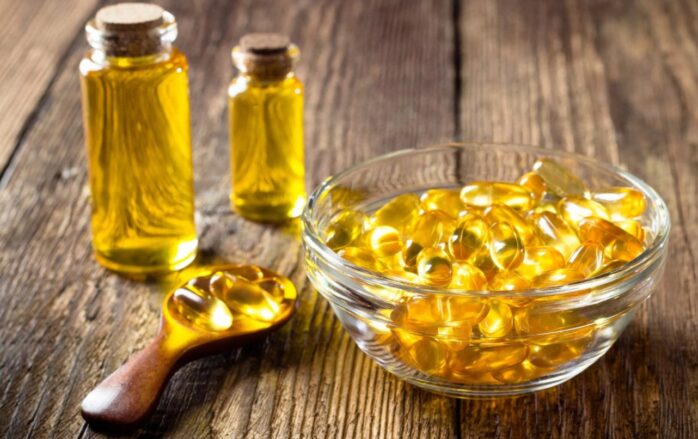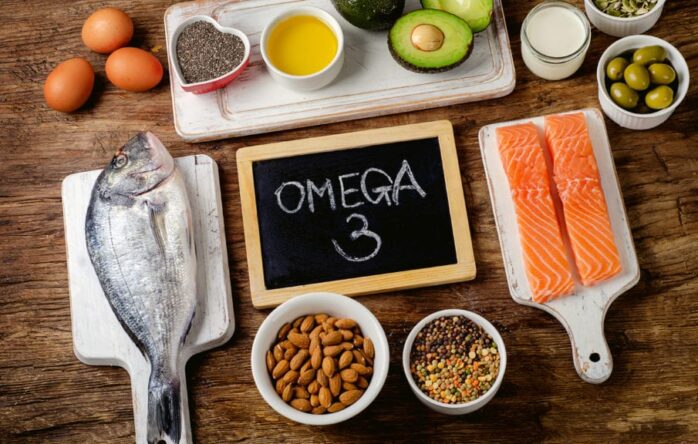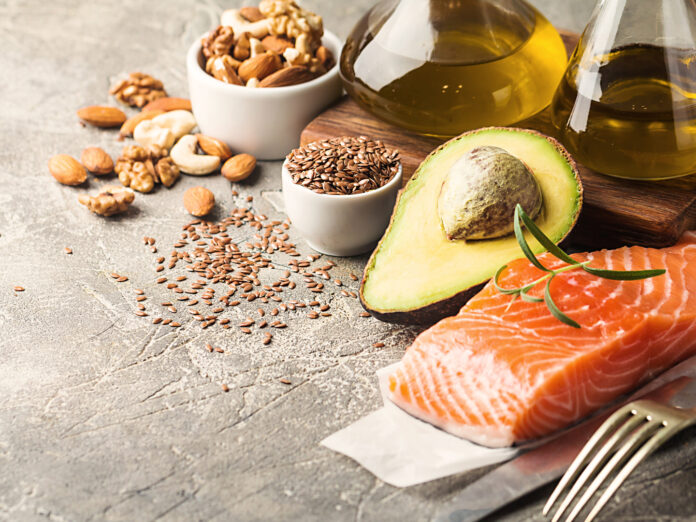We all know that the body needs certain fatty acids for good health, but it’s also important to make sure that we’re getting the right balance of omegas. Omega-3 fatty acids are considered essential because the body cannot produce them on its own; and they’re readily found in fish, nuts and seeds, and other foods. Omega-6 fatty acids, on the other hand, are considered non-essential because the body can make them from omega-3s.
Omega-3 and Omega-6 fatty acids are both essential fatty acids that play an important role in human health. Omega-3s are an important part of the diet, but we all know they are by no means the only fatty acids we need. In fact, the opposite is true: the most important goal of fatty acid intake is to get enough Omega-6. Omega-3 can also be toxic, and having too much Omega-6 has been linked to cancer, heart disease, and diabetes.
Omegas are essential fatty acids, or fats, that appear in almost every cell in your body – and they are even found in the tissue that lines your heart. They’re essential for the proper functioning of your heart, brain, eyes, joints, skin, and nervous system, as they help to maintain healthy cholesterol levels, maintain healthy blood pressure, and keep inflammation down.
What is the difference between an essential fatty acid and a non-essential fatty acid?

You’ve probably heard of Omega-3s and seen them promoted on food labels or printed in headlines on the front pages of health publications. They seem to be significant, but what exactly do they accomplish and where can we locate them?
Essential fatty acids are carbon-based chains that our bodies cannot produce on their own. They must be obtained from diet since they are required for the following physiological functions:
-
Functions of the brain
-
Immune reactions
-
Inflammation management
-
Heart and circulatory health
Omega-3 and Omega-6 are the two necessary fatty acids. Essential fatty acids must be in a healthy ratio to one another in order to function correctly inside the body and provide us with excellent health.
What Does a Good Omega-3 to Omega-6 Ratio Look Like?
A healthy omega-3 to omega-6 ratio is between 1:1 and 1:4, yet most Americans get their critical fatty acids at a 1:20 ratio! This is owing to the high levels of Omega-6 in many of the meals we consume.
Find out what Matt and Megha’s fatty acid ratio is on a normal day of keto eating in the video below!
Keto Food List (FREE PRINTABLE)
Join 150,000 people who have already gotten a FREE keto food list and fresh recipes every week!
Omega-6 Dangers: Too Much of a Good Thing

Both essential fatty acids are required by the body, however if not balanced with an equivalent quantity of Omega-3, too much Omega-6 may be harmful. High levels of Omega-6 in the body may induce inflammation, which can lead to autoimmune illnesses including arthritis, renal failure, and heart issues.
The following foods contain omega-6 fatty acids:
-
Vegetable Oils That Have Been Refined
-
Food that has been deep fried
-
Nuts
-
Seeds
Many individuals have an unhealthy essential fatty acid ratio, which is reasonable. According to Fox Business, almost a quarter of all Americans consume fast food at least once a week! Restaurants often utilize refined vegetable oils for deep frying, and soy and corn oil are included in the majority of packaged and processed meals.
Adults should eat approximately 15 grams of Omega-6 per day, according to the Food and Nutrition Board of the US Institute of Medicine. There is no need to take supplements since getting a sufficient quantity of Omega-6 in the diet is very simple. Raw nuts and seeds should provide the bulk of your Omega-6s.
More Omega-3s are required

Reduce your consumption of omega-6s and increase your intake of omega-3s to attain a balanced fatty acid ratio. If you consume the appropriate omega-3 fats, you may enhance heart health, combat inflammation, prevent dementia, and promote general mental wellness.
Omega-3 comes in a variety of forms. Let’s have a look at the most essential ones.
-
DHA (docosahexaenoic acid) is a 22-carbon molecule. (a lengthy sequence of events)
-
Cold-water fish, grass-fed beef, and eggs all contain this nutrient.
-
-
EPA (eicosapentaenoic acid) is a 20-carbon molecule. (a lengthy sequence of events)
-
Cold-water fish, grass-fed beef, and eggs all contain this nutrient.
-
-
Alpha-linolenic acid (ALA) has 18 carbon atoms.
-
It may be found in plants. Flax oil, chia seeds, walnuts, soybean oil, and canola oil are all good sources of omega-3 fatty acids.
-
The bulk of study on Omega-3’s health benefits has focused on EPA and DHA, therefore consume these foods to boost your Omega-3 consumption!
Omega-3 Sources of High Quality
-
Salmon
-
Sardines
-
Anchovies
-
Cod Liver Oil/Fish Oil
-
Eggs from Grass-Fed Chickens
-
Grass-fed Beef
Plants are a poor source of omega-3 fatty acids.
The liver’s enzymes must convert ALA to the beneficial EPA and subsequently DHA, which takes a lot of energy! Only 15% of ALA products are converted, according to the Encyclopedia of Dietary Supplements, therefore it’s better to take direct sources of EPA and DHA rather than ALA products that must be converted.
Omega-3 Sources of Poor Quality
(EPA and DHA must be converted.)
The National Institutes of Health has a comprehensive chart that shows numerous foods and their Omega-3 concentration.
Is it necessary for me to take supplements?

Omega-3 fatty acids are best obtained from marine animals. Cold-water fish oils, wild Alaskan salmon, and even seaweed fall into this category. If you want to try supplementing with fish oil, we suggest spending a little extra so you don’t wind up with a low-quality, rancid product. Every morning, Matt and Megha take a few spoonfuls of cod liver oil.
If you notice a bottle of Omega-3 capsules or even a combination of Omega-3-6-9 at the pharmacy, keep in mind that you shouldn’t be supplementing Omega-6 (you receive enough from your food) and that your body produces Omega-9 on its own. These capsules aren’t required.
Reduce your intake of processed vegetable oils and deep-fried meals while increasing your intake of fish. Because the fat in fresh, raw, or canned fish hasn’t been deep fried and oxidized, it’s the finest option. Matt’s favorite fish is sardines. (This isn’t Megha’s)
Try our Salmon Poké Bowl and Spicy Ahi Tuna dish to get some important fatty acids into your week! To keep track of your essential fatty acid ratio, download the Cronometer App.
Cass Cardy, the company’s Digital Brand Manager, penned this piece.
Cass handles social media, writes blog articles, and creates ebooks. She’s been on the keto diet since 2016 to address depression, hormone imbalances, IBS, and acne, and she’s now a proponent of the diet. The Communications graduate may be found reading a best-seller at home or browsing a thrift shop. She may also be found here!
Sources
Omega-3 and Omega-6 are two different fatty acids that your body can’t live without. A diet rich in Omega-3’s helps your body to make hormones that regulate growth and maintenance of cells and tissues. Omega-3’s are found in fish, flax seed, walnuts, soybeans, and seeds.. Read more about omega-3 and omega-6 foods and let us know what you think.
Frequently Asked Questions
What is the balance between omega-3 and omega-6?
Omega-3 is a type of polyunsaturated fatty acid that is found in fish, seafood, and some plants. It has been shown to have positive effects on the body. Omega-6 is also a type of polyunsaturated fatty acid but it comes from vegetable oils such as soybean oil, corn oil, sunflower seed oil, cottonseed oil, and safflower seed oil.
Do you need to balance omega-3 and 6?
Omega-3 and 6 are essential fatty acids, which means they cannot be synthesized by the body. You need to get these from food sources.
What is the best ratio of omega-3 to omega-6?
The best ratio of omega-3 to omega-6 is 1:1.




